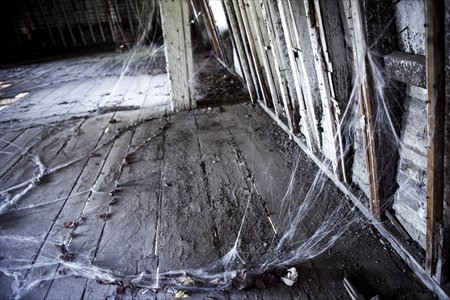

No.81 Haunted House
Current ownership belongs to the Beijing Catholic Diocese and the buildings are on the protection list for Beijing's Excellent Architecture, which means they can be renovated and restored, but never demolished.
According to Chinese movie website mtime.com, both houses will provide an appropriate backdrop to the upcoming 80 million yuan ($13 million) Chinese 3D suspense-horror movie Inward 81, which started filming as recently as June 3.
Nevertheless, both buildings' immunity from wrecking crews is good news for explorers who haven't yet "discovered" No.81. Inward 81 will no doubt open up the houses to a much wider audience but that's if they can stomach the haunting tales of its lore.
For years, ghost stories have circulated that a concubine hanged herself after her resident Kuomintang officer-cum-lover fled to Taiwan to evade the communists. Another ghostly legend suggests that a group of renovators simply vanished while working on the building. More recently, in 2007, an urban explorer was said to have disappeared while investigating the houses.
None of this perturbs urban explorer Zhao Yang in the slightest.
"Last time I was here was in April," says Zhao, 26, as he climbs headfirst into the blackness of a partially boarded-up window on the ground floor of No.81.
Once inside, he gestures for Metropolitan to follow. Suddenly we're in front of an old mantelpiece in what seems to be the living room.
"I don't really believe in ghosts," Zhao says.
History's remains
Zhao, a Beijing native, is a professional food website photographer and full-fledged city explorer. In 2008, Zhao formed his own city exploration group with a handful of his classmates called the "The Lurkers."
The group disbanded when members graduated and entered full-time employment, but as the most enthusiastic ex-leader, Zhao kept up the pastime, establishing what he calls the "Cooling Project", a solo venture consisting of Zhao taking pictures of abandoned sites in Beijing by himself. He's also kept a photo blog called Whitez since 2006 to chronicle his journeys into the urban unknown.
"I've been to a lot of abandoned places to explore and take pictures," Zhao muses. "I just love the feeling of running away from crowded, noisy urban life."
According to Zhao, one of the most popular sites for Beijing-based explorers is Shougang Industrial Heritage Park, northwest of Beijing in Shijingshan district. Built in 1919, Shougang is a veritable gold mine for explorers with intricate housing structures, mazy paths, empty mills and old factory equipment. In its pomp, the large-scale steel manufacturer employed up to 80,000 people producing over 15 million tons of steel annually. The space now has tour groups going through it, but there are still unregulated spaces worth exploring - until developer's plans to turn it into an art hub kick in.
Zhao visited the site again in April to take photos for his blog. Captivated by the surroundings, Zhao imagined the magnitude of the park's full-scale operation.
Zhao laments the fast pace of development in the capital, saying that places worth exploring are quickly disappearing.
He describes being "incredibly fascinated" with the discarded medical paraphernalia, sickbeds, medicinal bottles and empty syringes that once littered Xiaotangshan, a makeshift SARS hospital in Changping district built in 2003 but demolished in 2010.
"I really had a sense of time and history when I was there," Zhao says.
Copyright ©1999-2018
Chinanews.com. All rights reserved.
Reproduction in whole or in part without permission is prohibited.